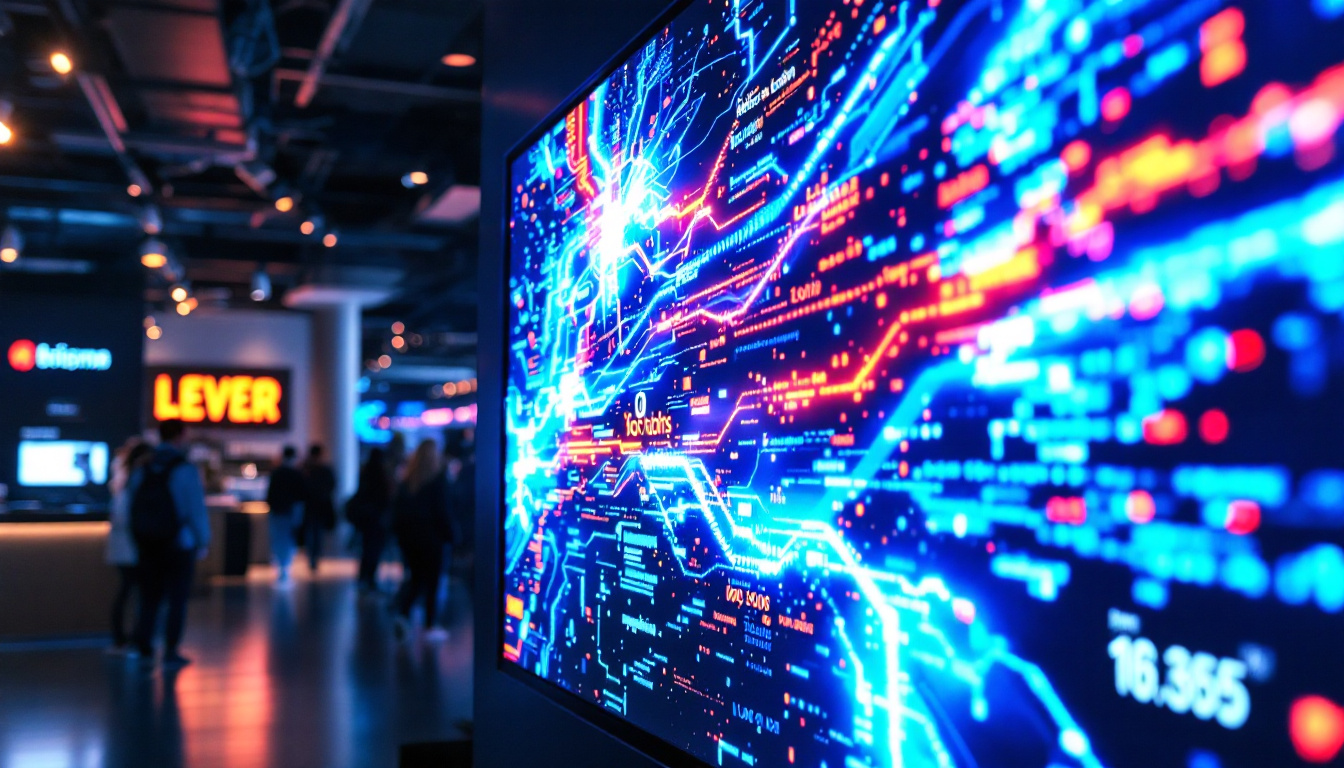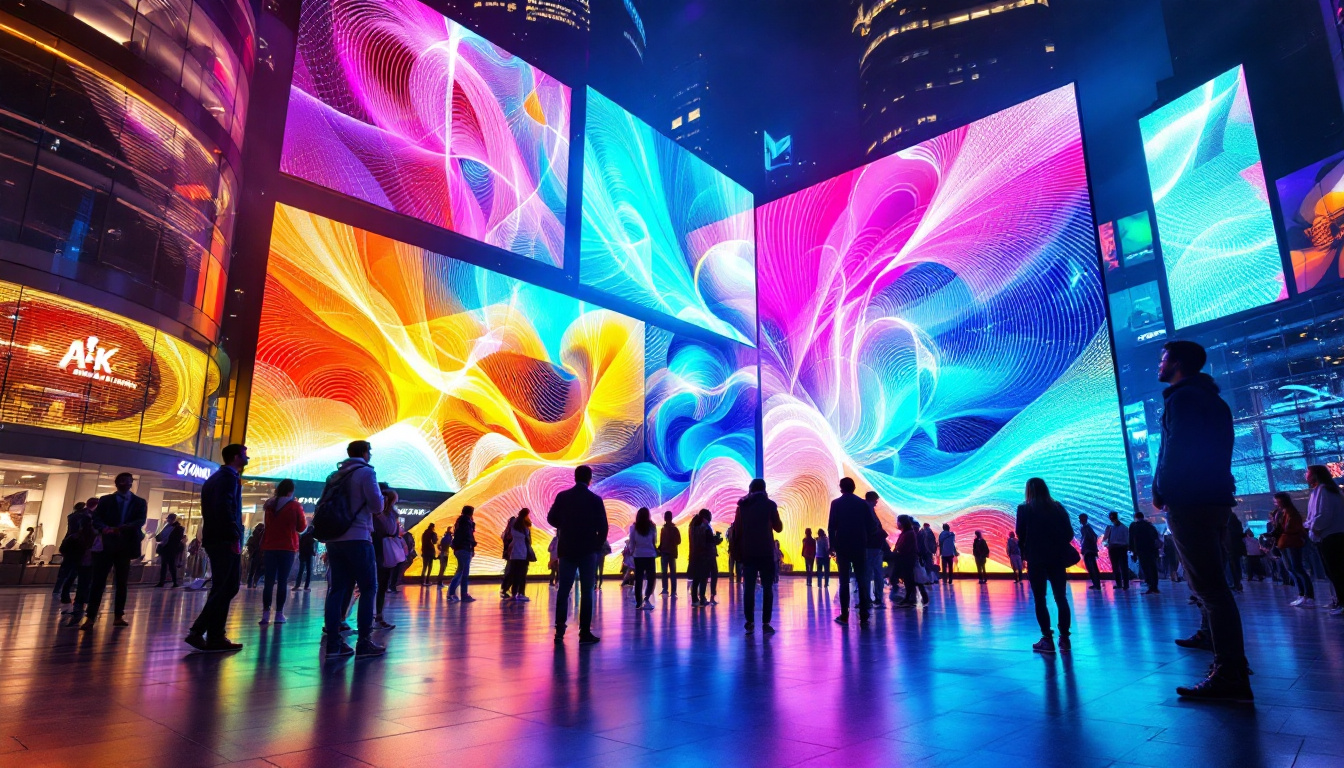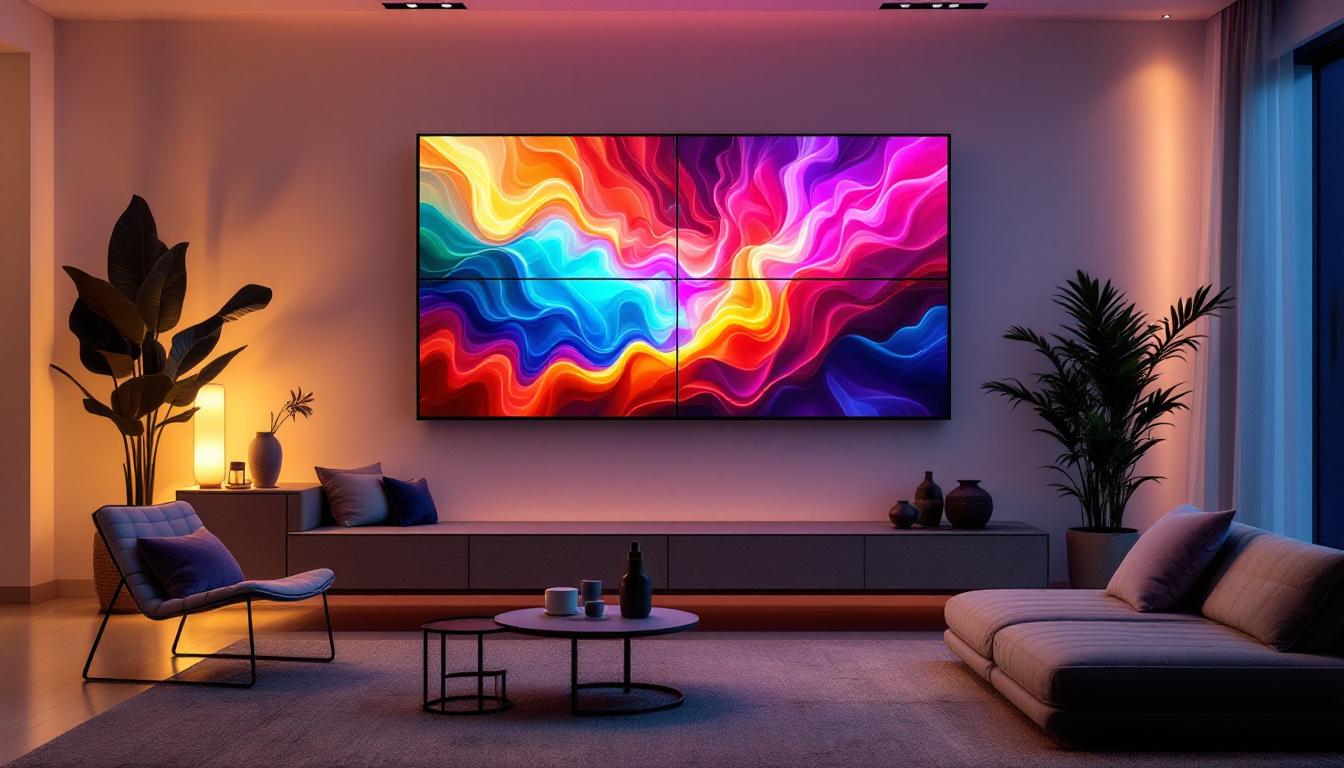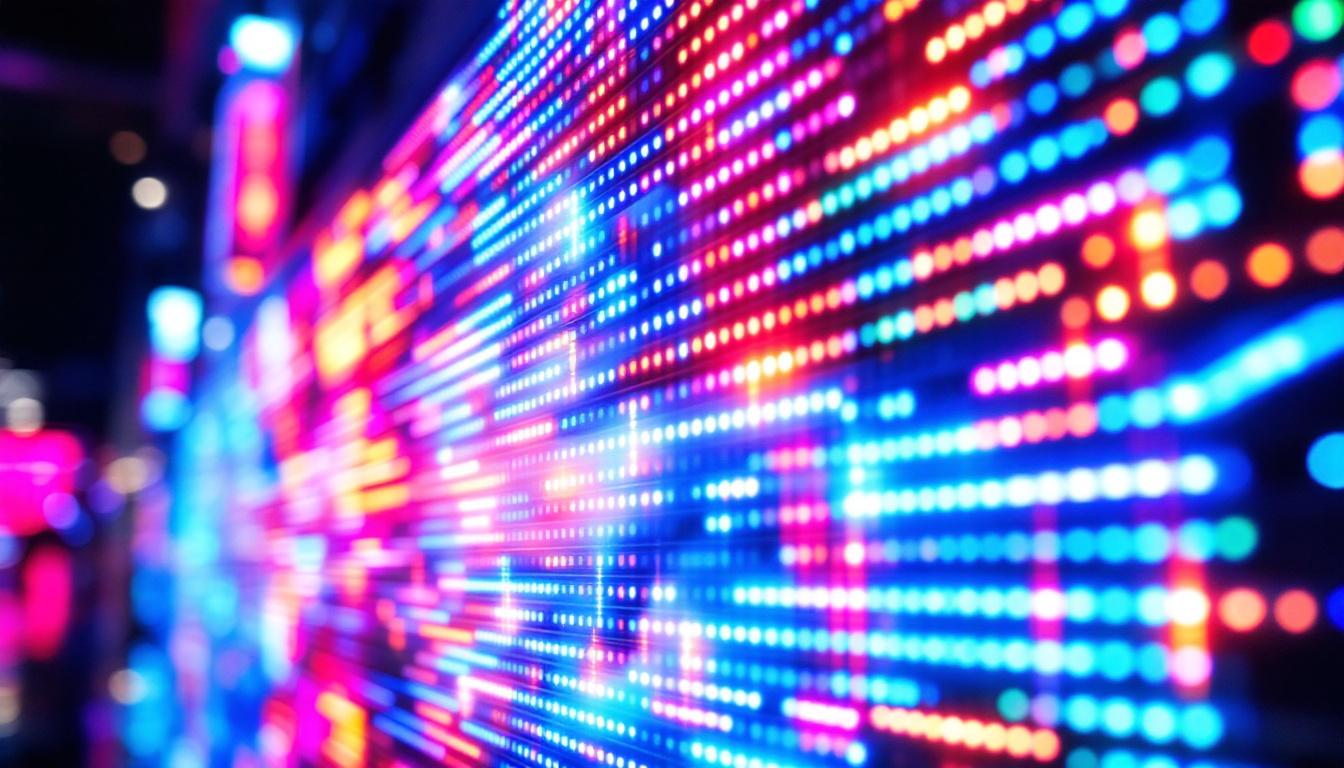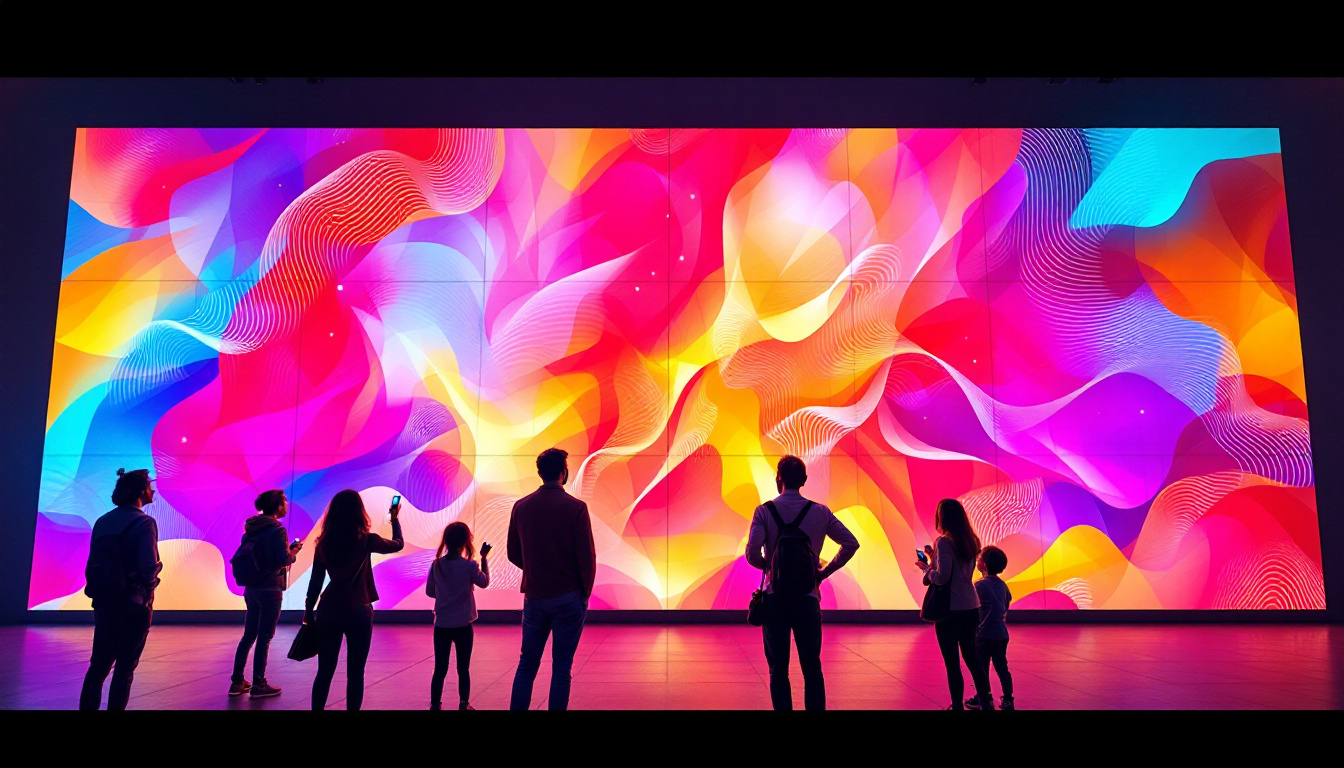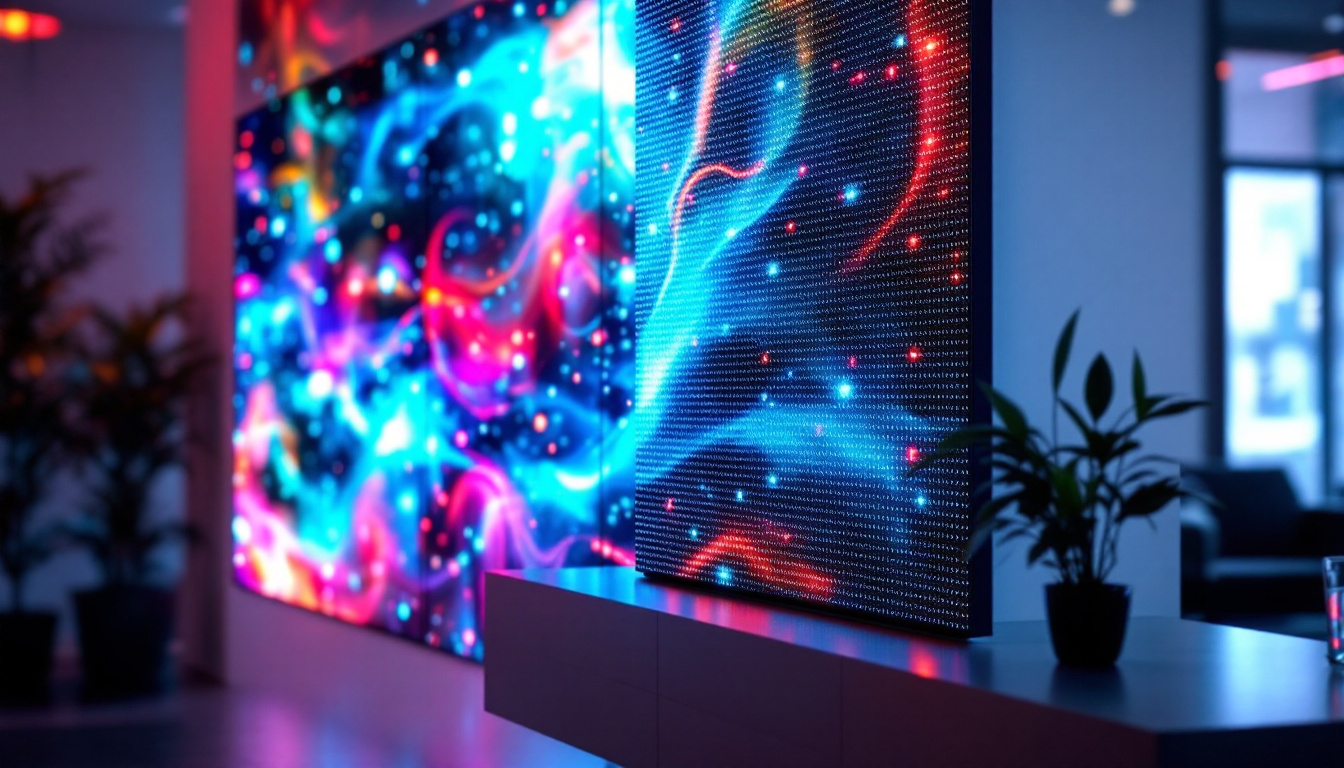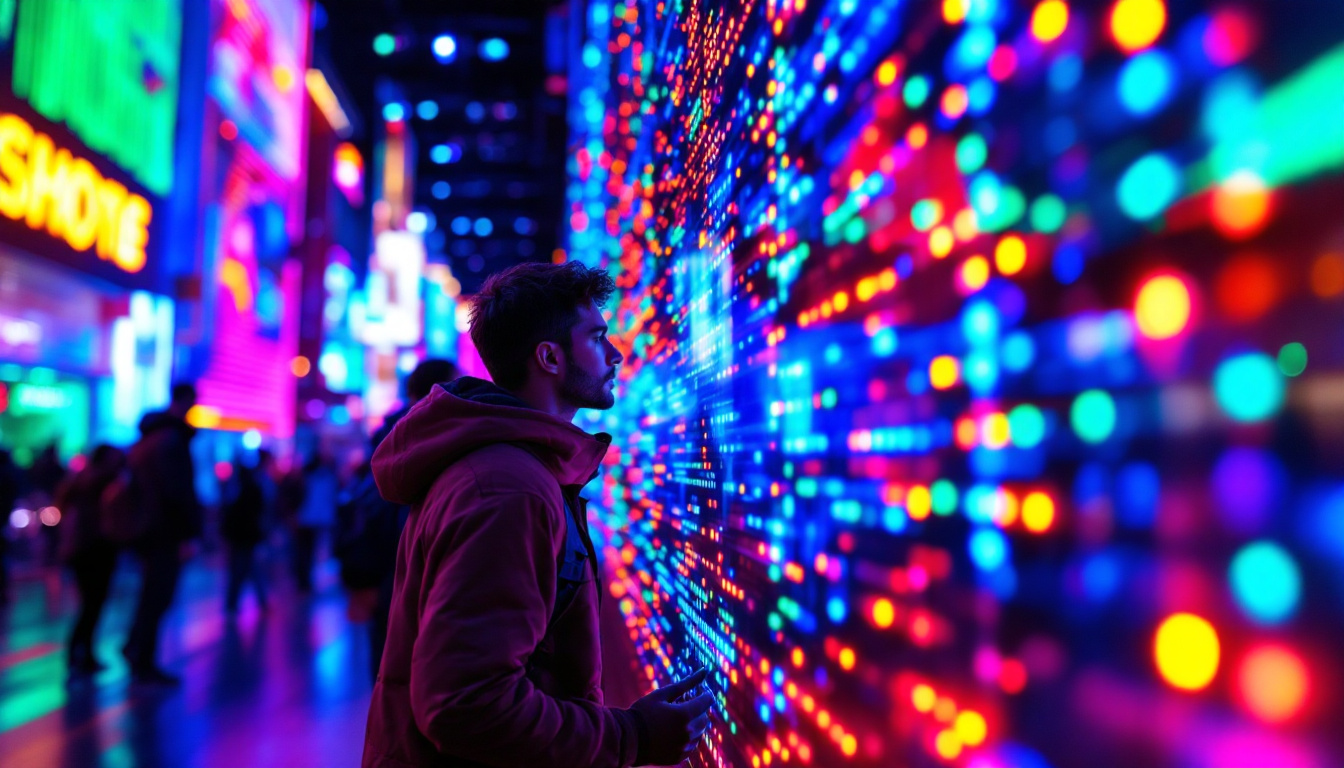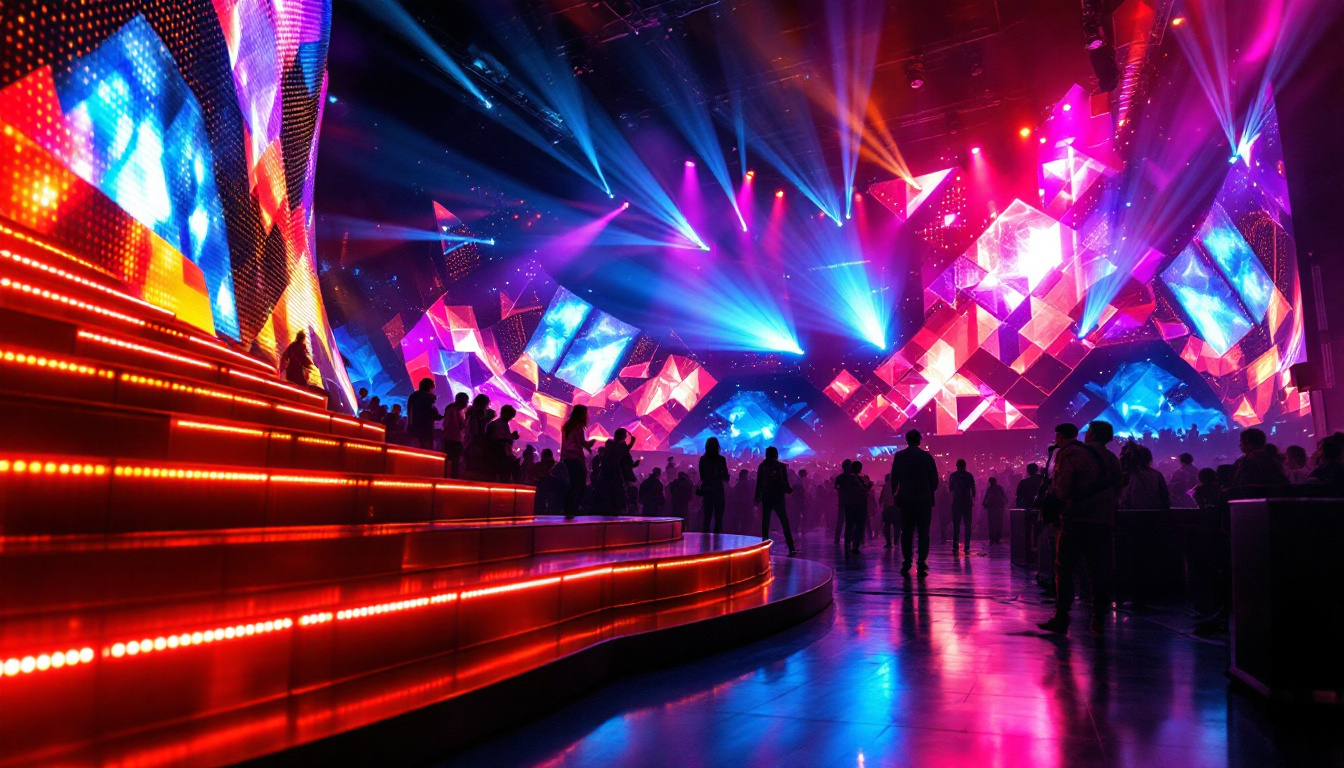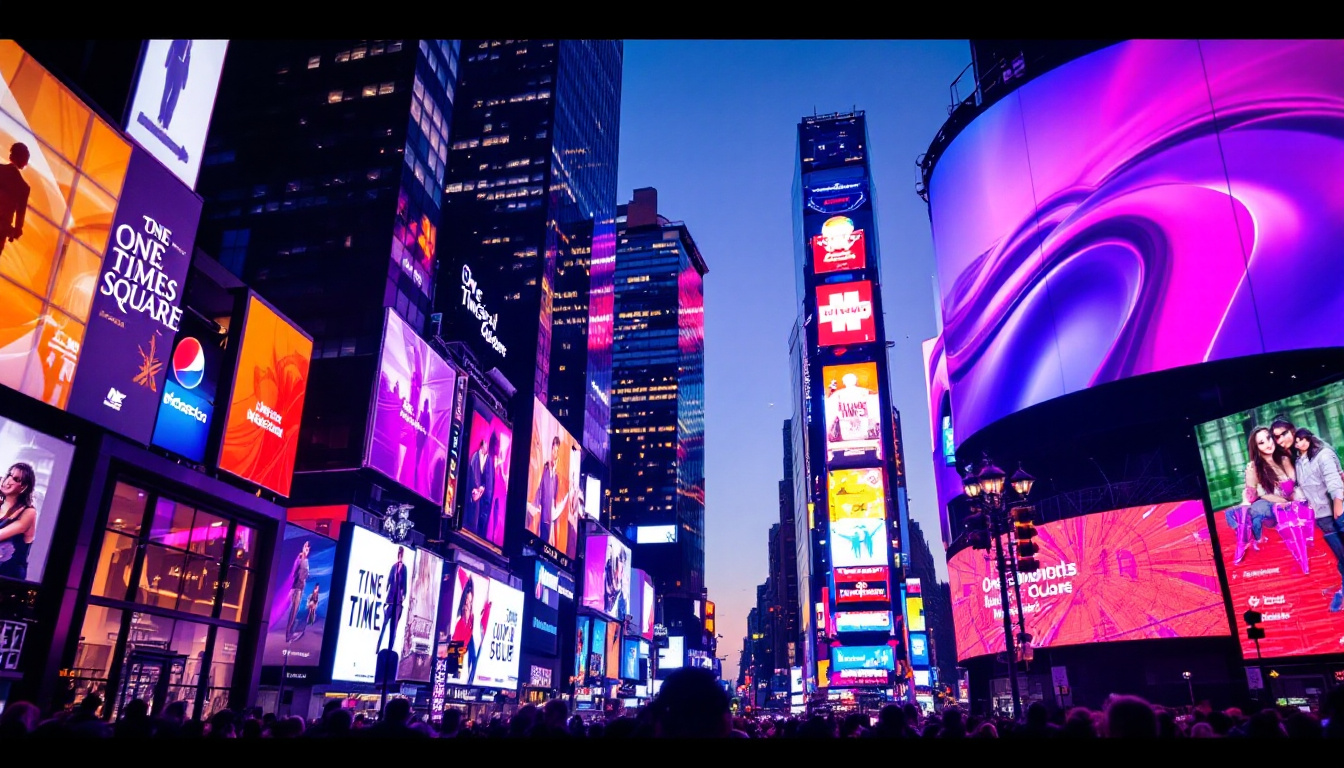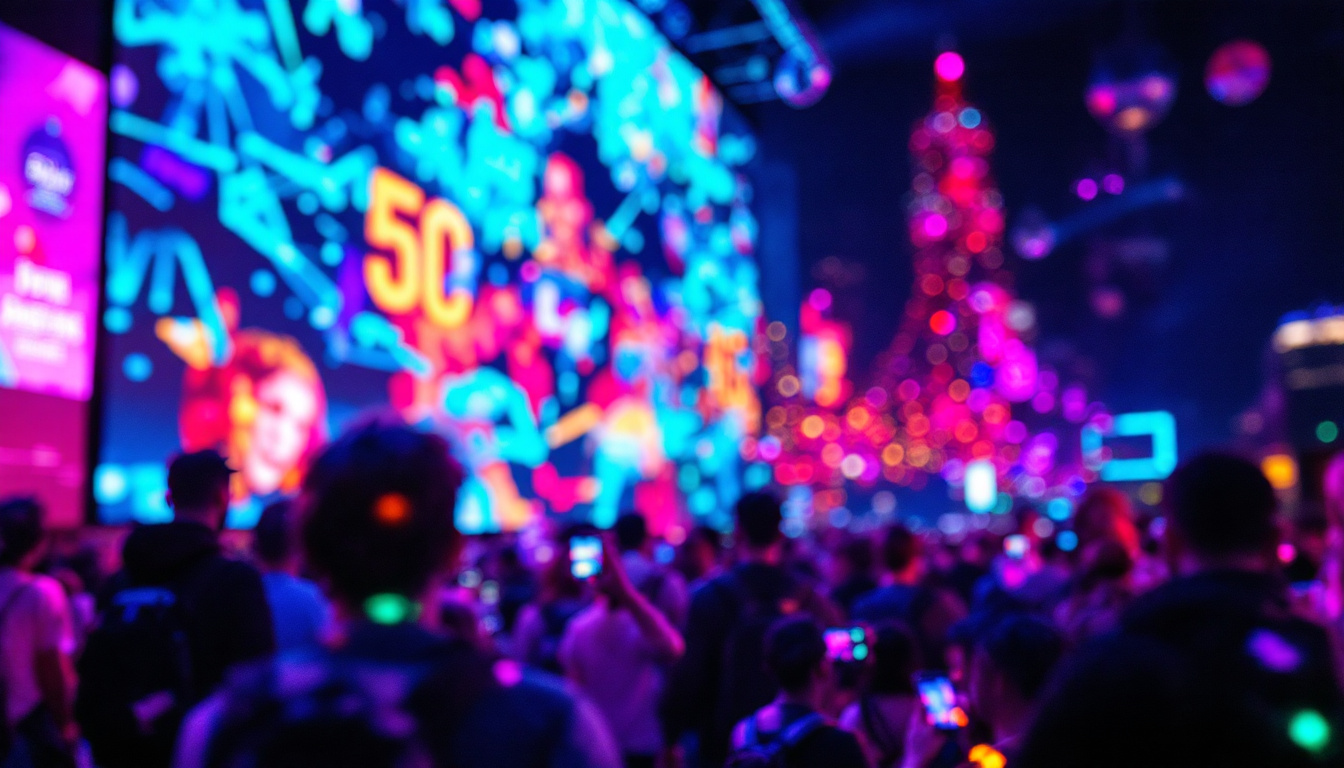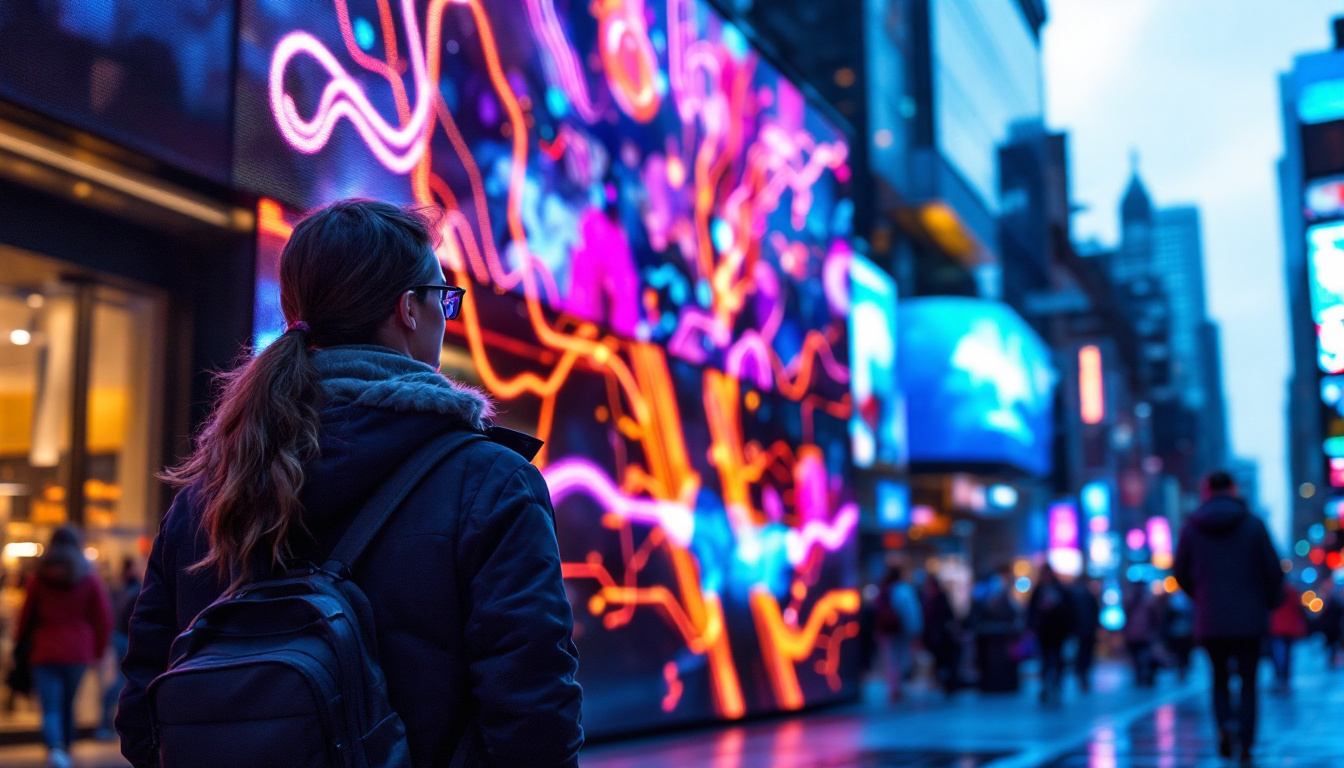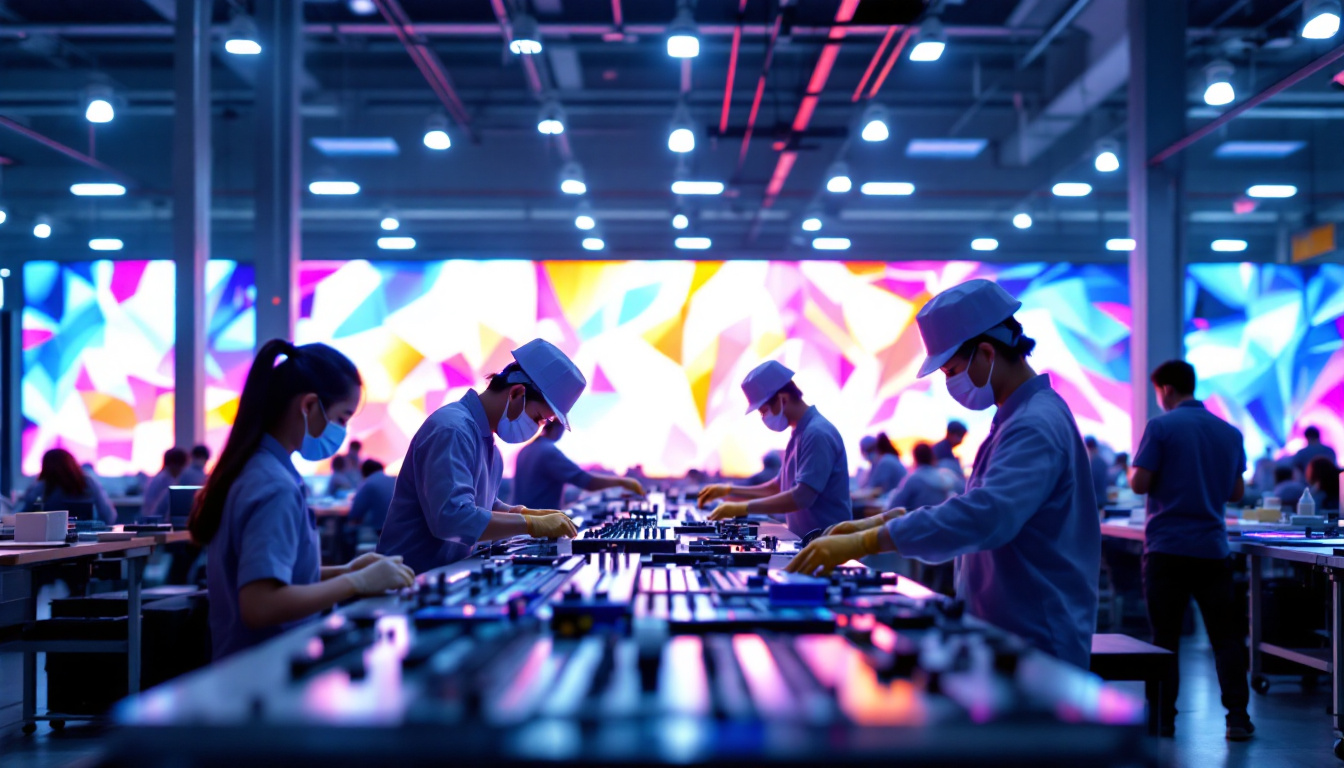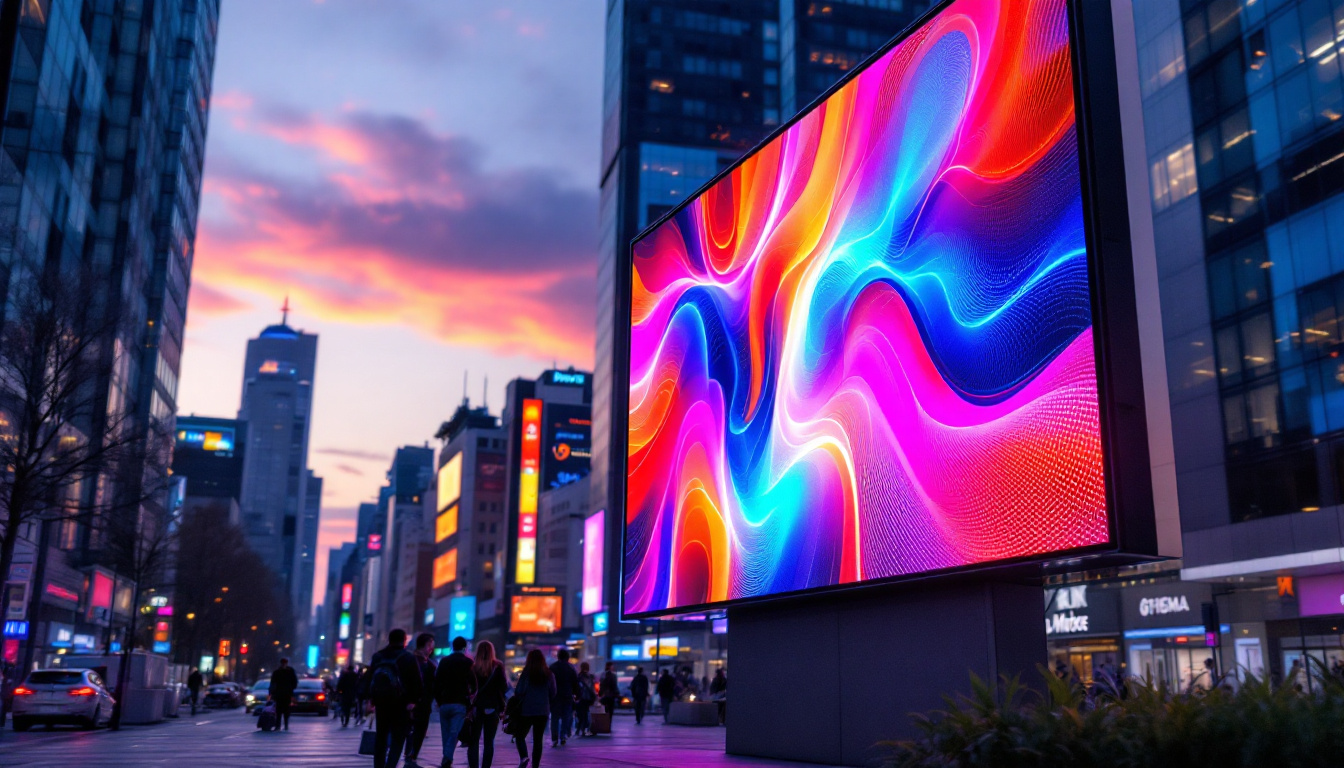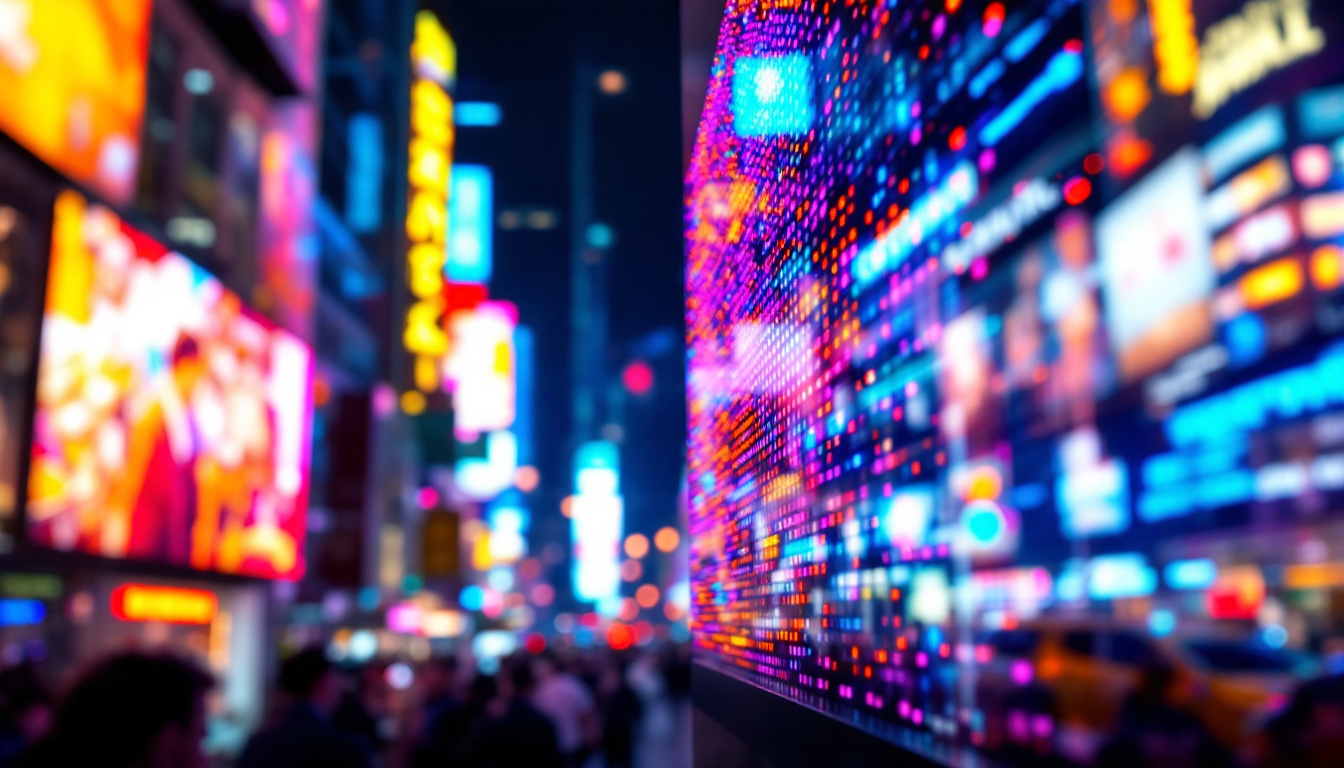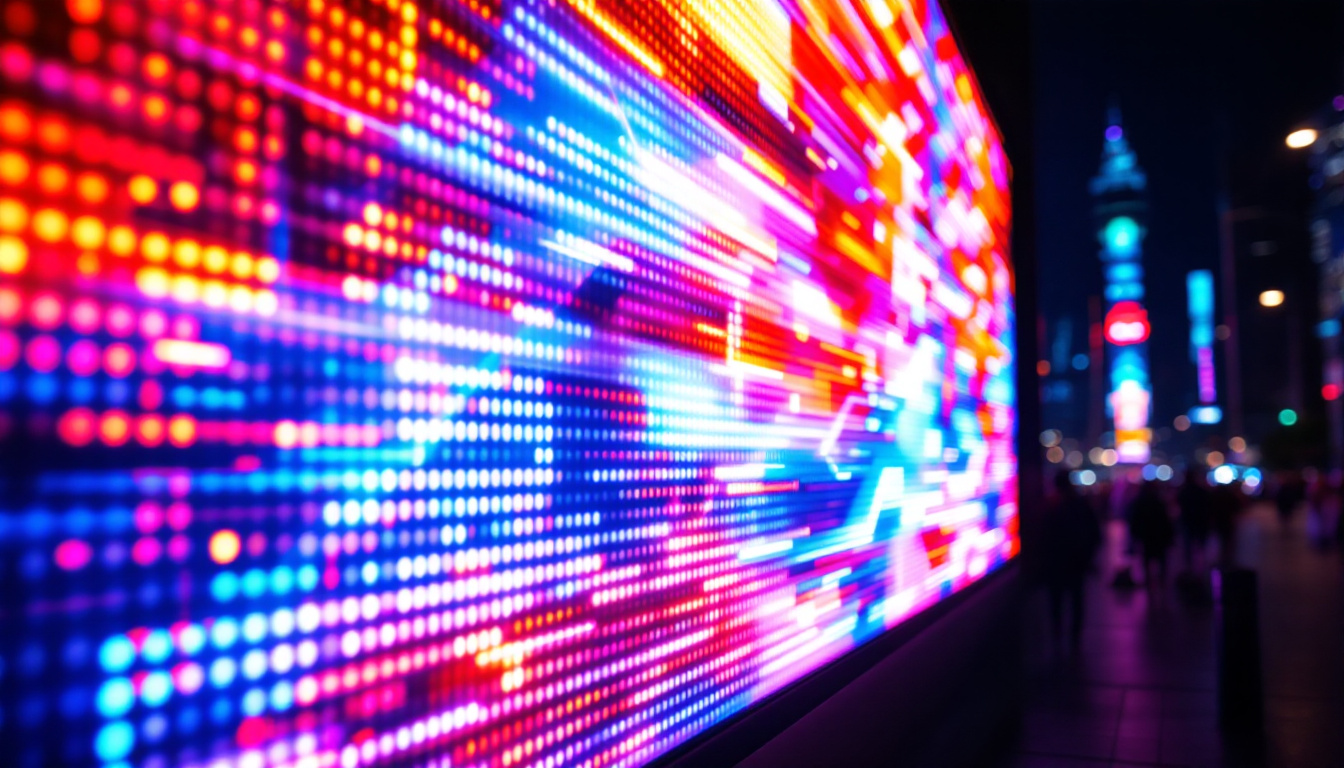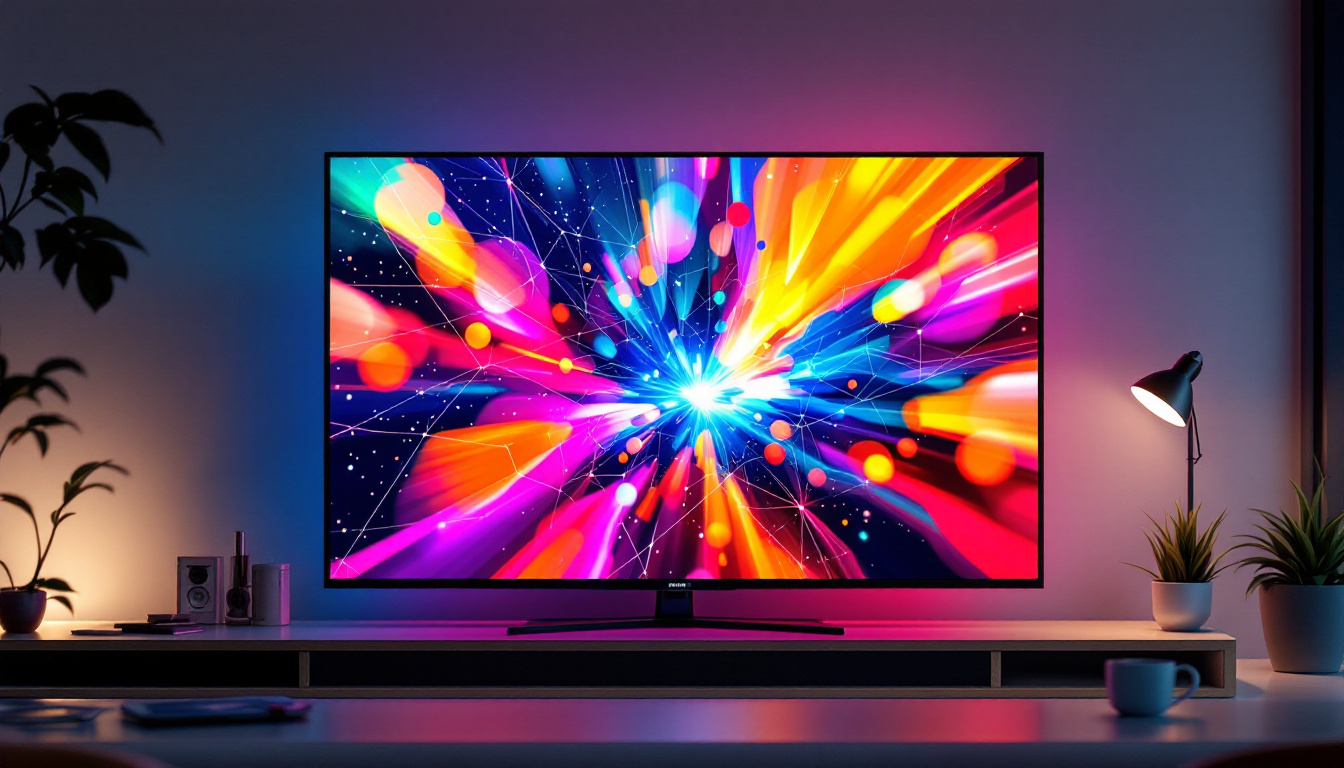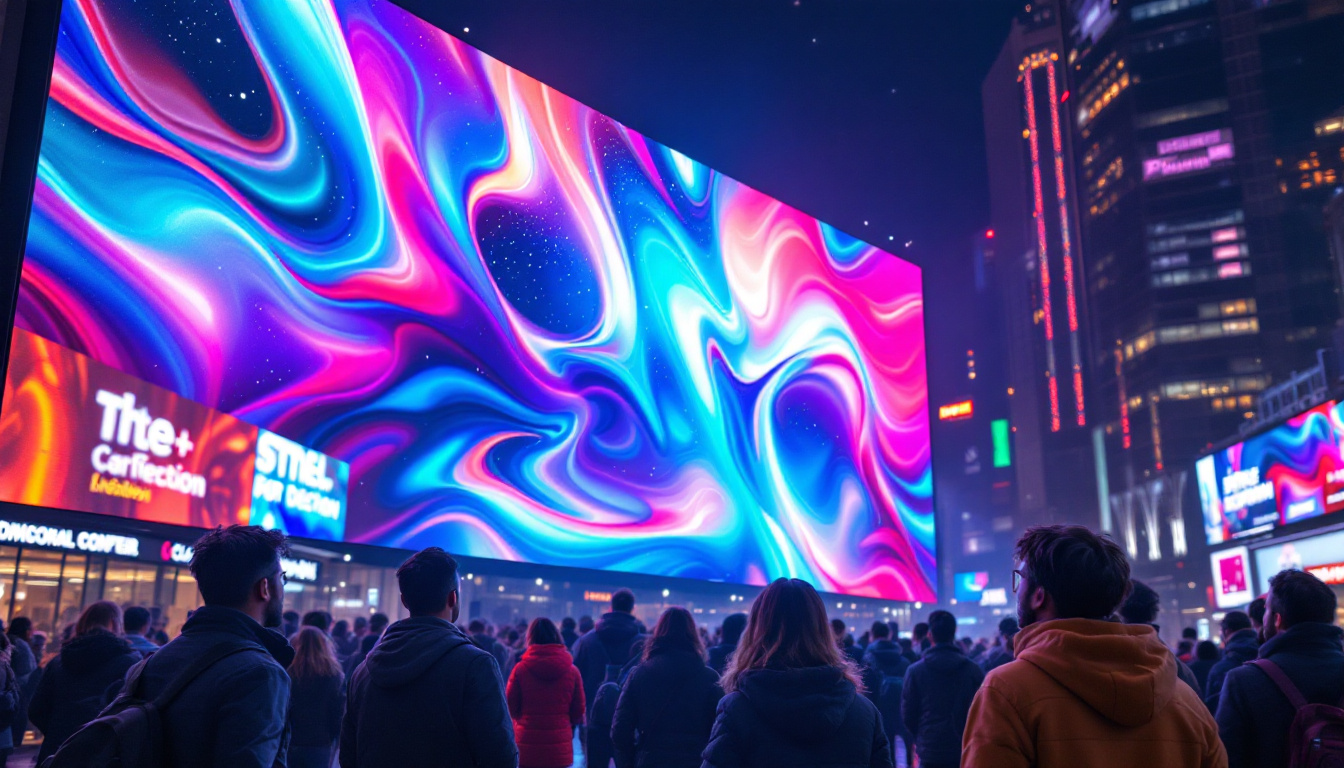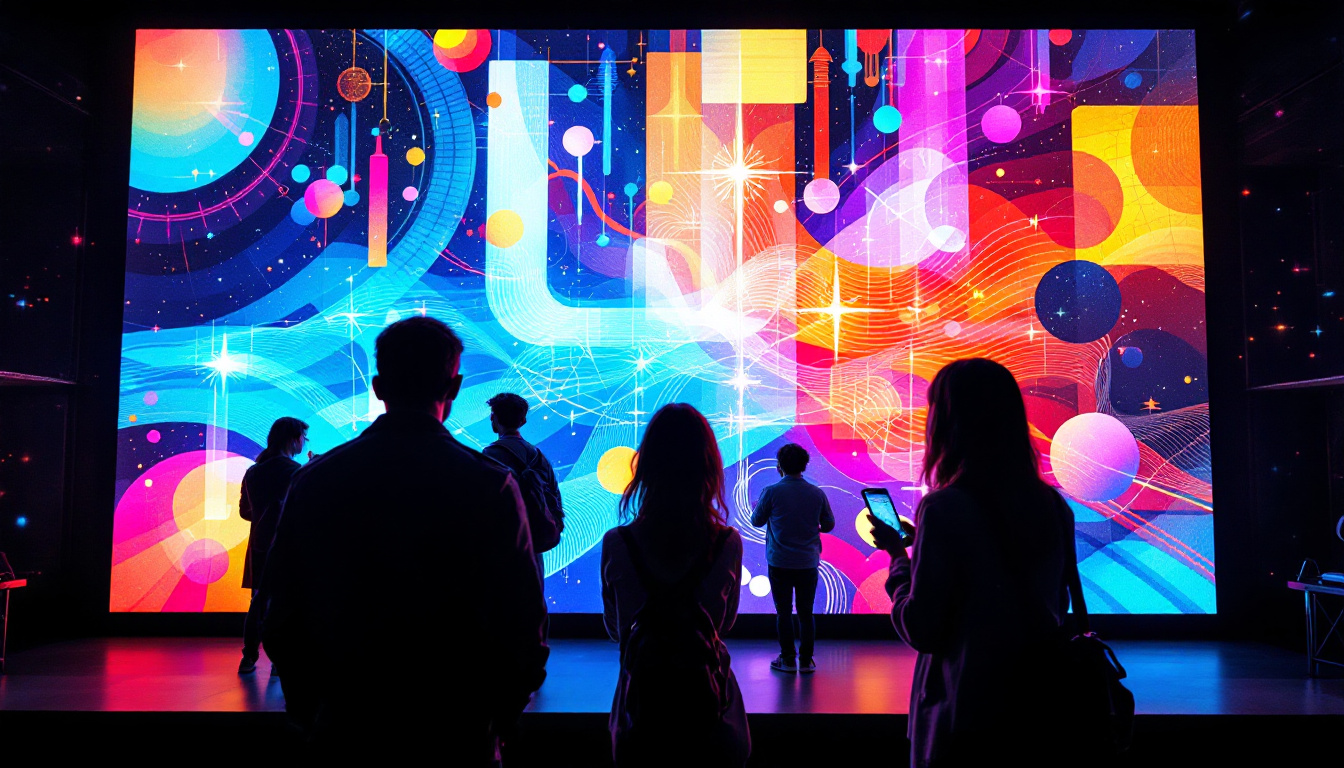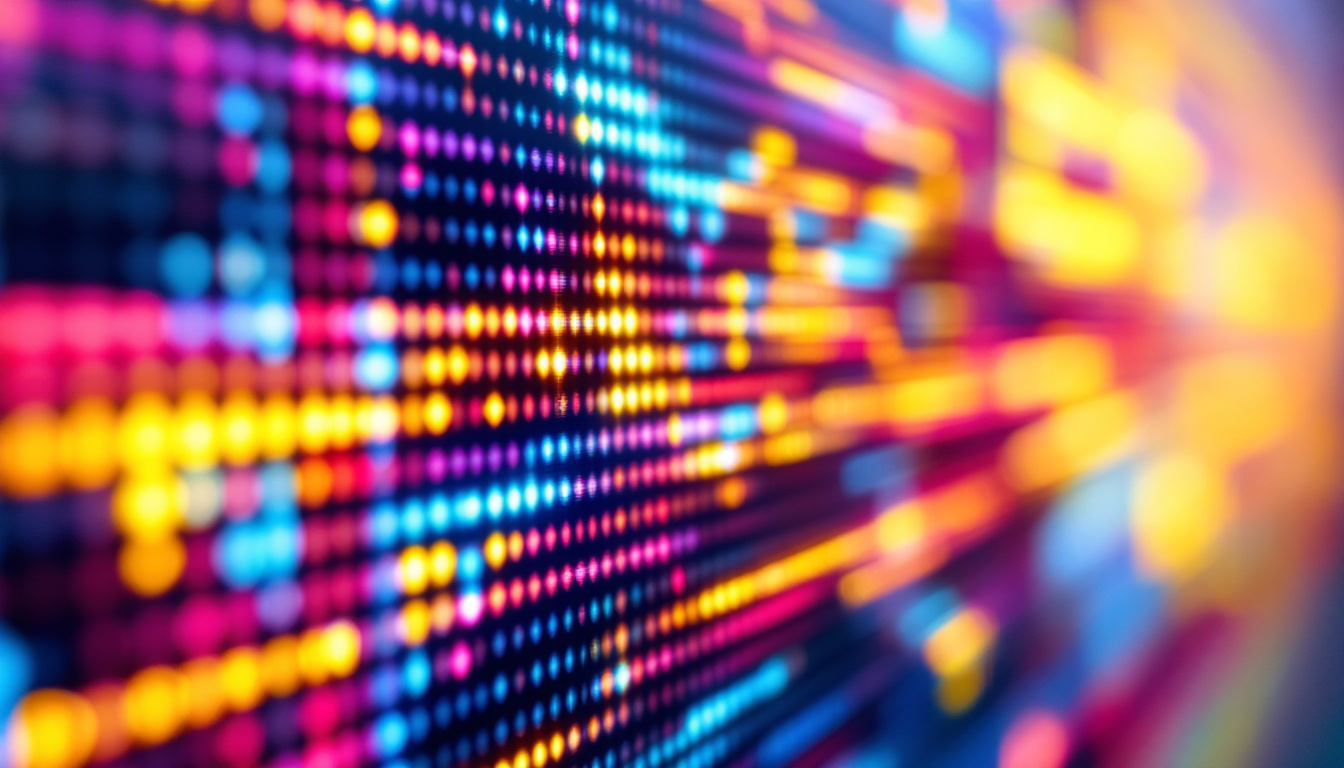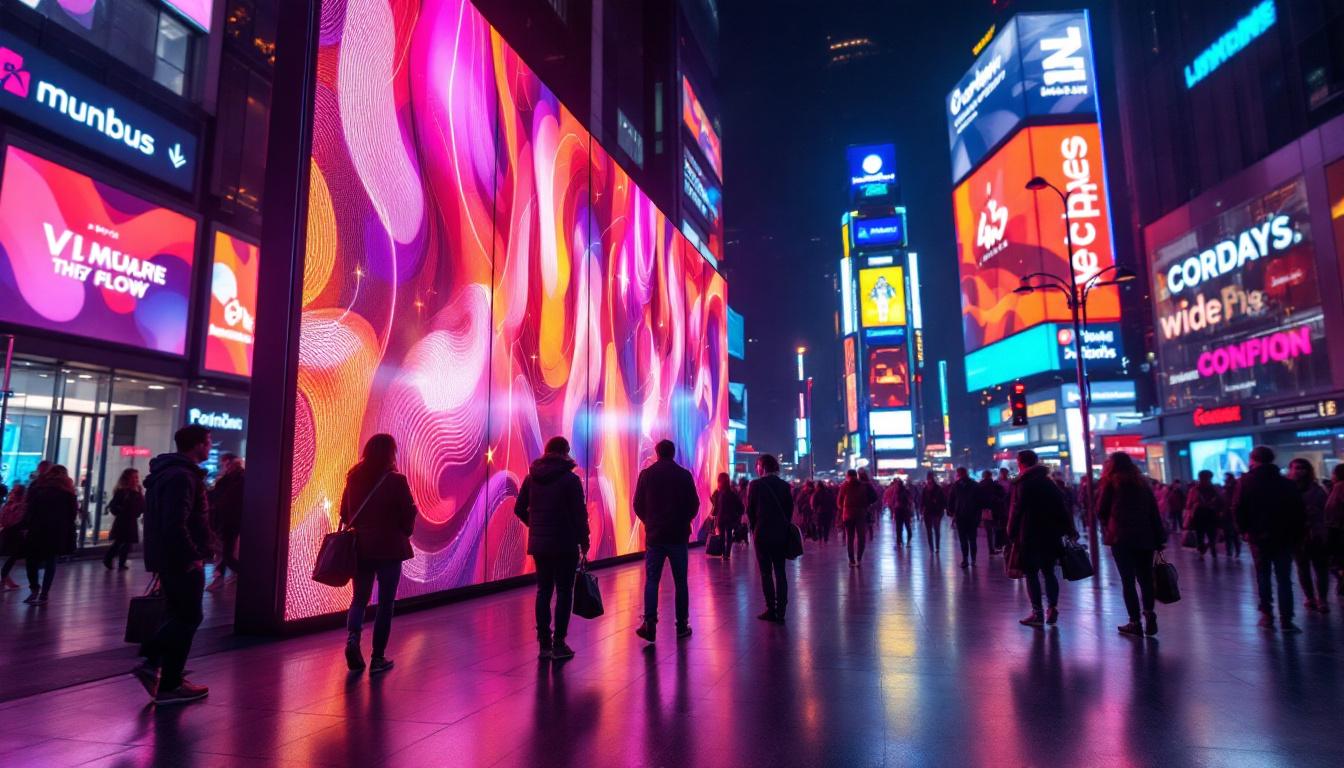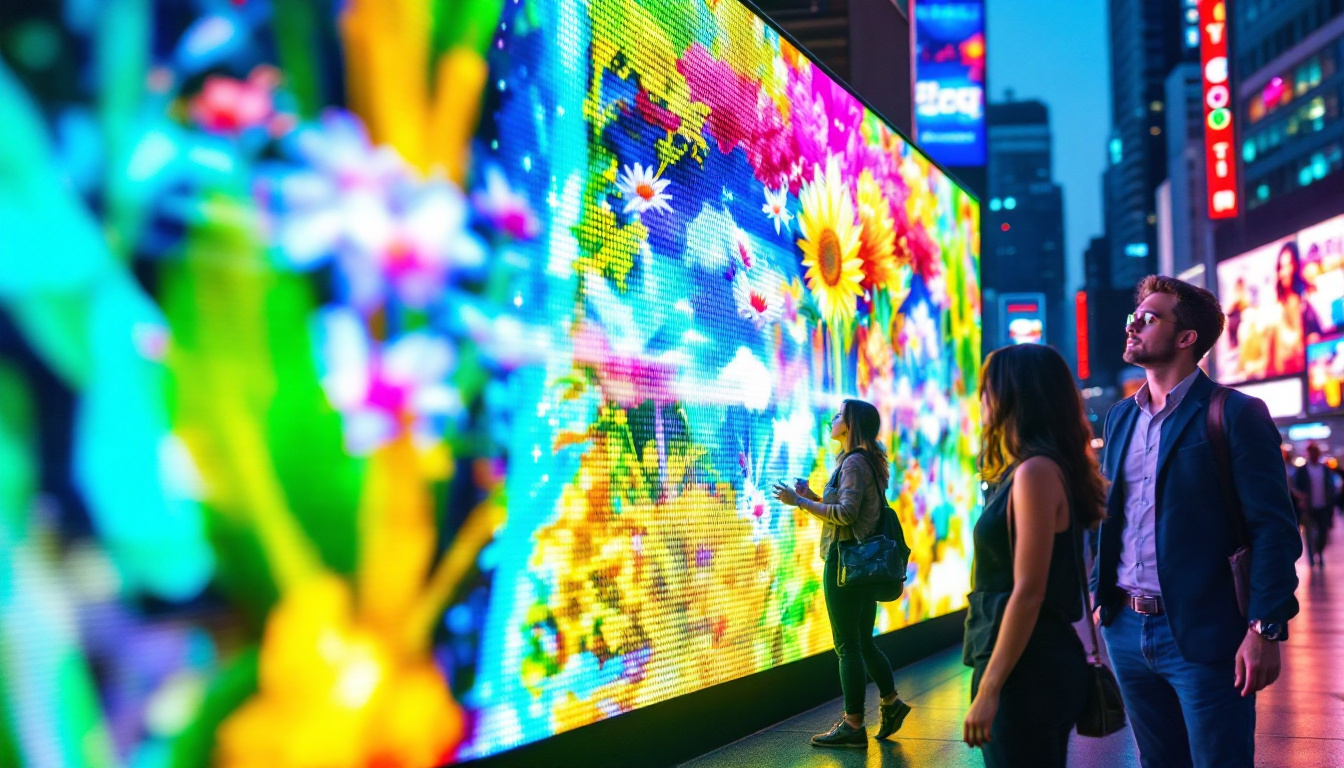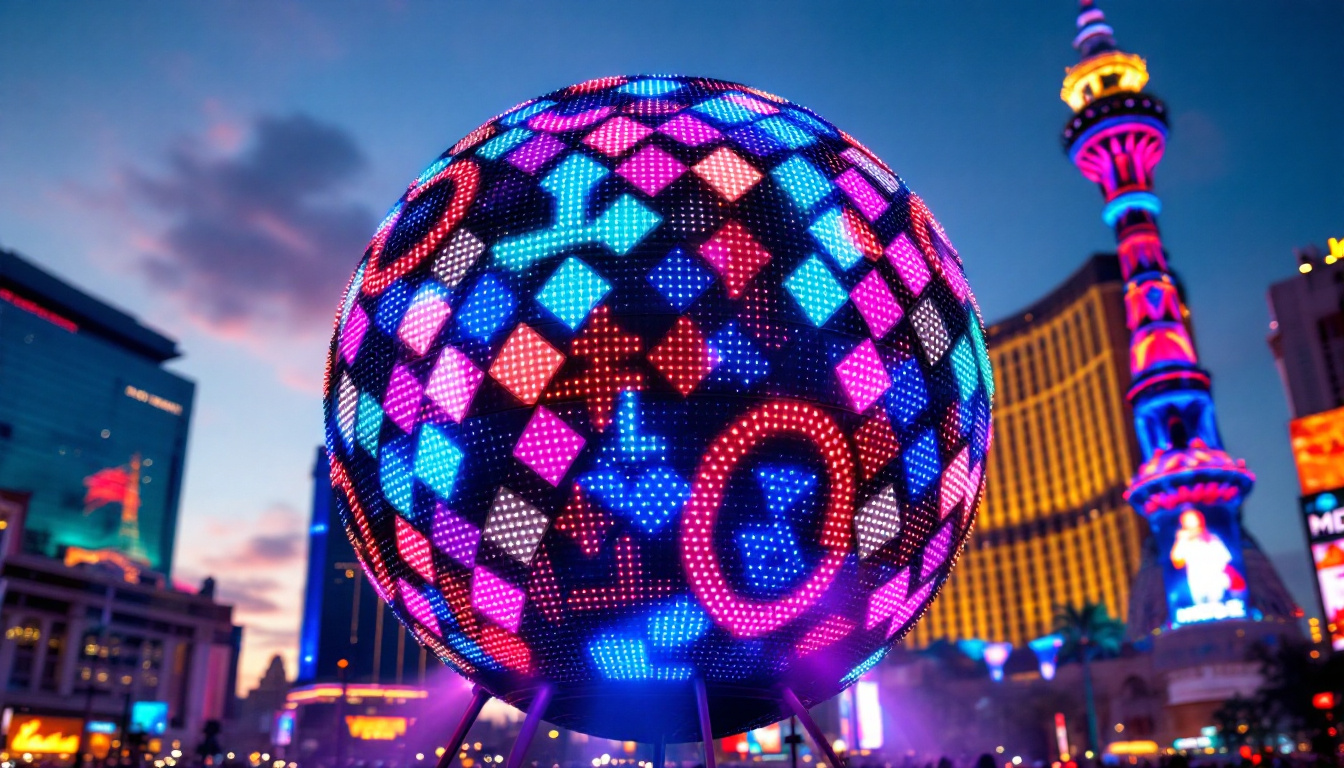In the rapidly evolving world of digital advertising and information dissemination, LED displays have emerged as a powerful tool for businesses and organizations. These vibrant screens not only capture attention but also convey messages effectively. This article delves into the intricacies of TV signage using LED displays, exploring their technology, applications, and benefits.
Understanding LED Display Technology
LED, or Light Emitting Diode, technology has transformed the way information is displayed. Unlike traditional LCD screens, LED displays utilize numerous small diodes that emit light, creating bright and vivid images. This section will explore how LED displays work and the different types available in the market.
How LED Displays Work
At the core of LED displays is the concept of pixels. Each pixel is made up of red, green, and blue diodes, which combine to produce a wide spectrum of colors. When these pixels are arranged in a grid, they form a cohesive image. The brightness and clarity of LED displays are significantly enhanced by their ability to emit light directly, rather than relying on a backlight, as is the case with LCDs.
Additionally, LED displays can be designed in various configurations, including flat panels, curved screens, and even large-scale video walls. This versatility allows them to be used in a range of environments, from retail stores to stadiums, ensuring that messages are seen clearly from various distances and angles. The technology behind LED displays is constantly evolving, with advancements in energy efficiency and color accuracy making them an increasingly popular choice for both consumers and businesses alike.
Types of LED Displays
There are several types of LED displays, each tailored for specific applications. The most common types include:
- Indoor LED Displays: These are designed for use in controlled environments, such as shopping malls or conference rooms, where visibility and resolution are paramount.
- Outdoor LED Displays: Built to withstand the elements, outdoor displays are typically brighter and more durable, making them ideal for billboards and public signage.
- Transparent LED Displays: These innovative displays allow light to pass through, creating a unique visual effect that is perfect for retail environments where product visibility is essential.
In addition to these common types, there are also specialized LED displays such as flexible LED screens, which can be bent and shaped to fit unconventional spaces, and high-definition LED displays that offer superior resolution for applications like digital signage and broadcasting. These advancements not only enhance the visual experience but also open up new possibilities for creative advertising and immersive experiences in various industries. Furthermore, the integration of smart technology into LED displays allows for real-time content updates and interactive features, making them a dynamic tool for engagement in both commercial and entertainment settings.
Applications of LED Displays
The versatility of LED displays means they can be employed in a myriad of settings. From advertising to information sharing, their applications are virtually limitless. Here are some of the most common uses of LED signage.
Advertising and Marketing
One of the primary applications of LED displays is in advertising. Businesses leverage these screens to showcase promotions, new products, and brand messages. The dynamic nature of LED signage allows for changing content, enabling businesses to keep their messaging fresh and engaging.
Moreover, LED displays can be strategically placed in high-traffic areas, ensuring maximum exposure. The bright colors and high contrast of LED technology attract attention, making it an effective medium for capturing the interest of potential customers. In addition, the ability to integrate motion graphics and videos further enhances the appeal, drawing in viewers who might otherwise overlook static advertisements.
As technology evolves, the integration of data analytics with LED advertising is becoming more common. Businesses can track viewer engagement and adjust their content in real-time, optimizing their campaigns for better performance. This data-driven approach not only maximizes advertising spend but also allows brands to tailor their messages to specific demographics, ensuring that the right audience sees the right content at the right time.
Information Dissemination
Beyond advertising, LED displays serve as vital tools for information dissemination. Airports, train stations, and public transport systems utilize LED screens to provide real-time updates on schedules, delays, and other important announcements. This ensures that travelers receive timely information, enhancing their overall experience.
In educational institutions, LED displays can be used to share announcements, event schedules, and even educational content, creating an interactive learning environment. Their ability to display clear and engaging visuals makes them an excellent choice for enhancing communication in various settings. Additionally, many schools and universities are incorporating LED technology into their classrooms, using it for interactive lessons that captivate students’ attention and facilitate better understanding of complex subjects.
Furthermore, municipalities are adopting LED displays in public spaces to communicate important civic information, such as emergency alerts, community events, and public service announcements. This not only keeps citizens informed but also fosters a sense of community engagement, as residents can stay updated on local happenings and initiatives.
Entertainment and Events
In the realm of entertainment, LED displays play a crucial role in enhancing the viewer experience. Concerts, sports events, and festivals often feature large LED screens that display live feeds, graphics, and advertisements. This not only keeps the audience engaged but also creates a more immersive experience.
Furthermore, LED displays can be utilized for stage backdrops, providing dynamic visuals that complement performances. Their flexibility in design and size allows event organizers to create stunning visual effects that captivate audiences. The use of LED technology in live events has transformed the way performances are experienced, with many artists now incorporating synchronized light shows that enhance the emotional impact of their music.
Moreover, the rise of virtual and augmented reality experiences at events has led to innovative uses of LED displays. By combining LED screens with interactive elements, organizers can create environments where attendees feel as if they are part of the performance itself. This trend not only elevates the entertainment value but also encourages social sharing, as attendees capture and post their experiences on social media platforms, further amplifying the event’s reach and impact.
Benefits of Using LED Displays
The adoption of LED displays comes with a host of benefits that make them an attractive option for businesses and organizations. Understanding these advantages can help stakeholders make informed decisions about their signage solutions.
Energy Efficiency
One of the standout features of LED technology is its energy efficiency. Compared to traditional lighting solutions, LED displays consume significantly less power, resulting in lower energy bills. This is especially important for businesses that operate large screens or multiple displays, as the savings can be substantial over time.
Additionally, LED displays have a longer lifespan, reducing the need for frequent replacements. This not only saves money but also minimizes waste, making LED technology a more environmentally friendly option.
High Visibility and Clarity
LED displays are known for their exceptional brightness and clarity, making them easily visible even in direct sunlight. This high level of visibility ensures that messages are conveyed effectively, regardless of the time of day or ambient lighting conditions.
The sharpness of images and videos displayed on LED screens enhances viewer engagement, making it more likely that audiences will absorb the information presented. This is particularly beneficial in advertising, where capturing attention is paramount.
Flexibility and Customization
Another significant advantage of LED displays is their flexibility. Businesses can customize their signage to fit specific needs, whether it be size, shape, or content. This adaptability allows for creative implementations that can align with branding and marketing strategies.
Moreover, LED displays can be programmed to change content dynamically, enabling businesses to tailor their messaging based on time, audience, or events. This level of customization is a powerful tool for enhancing customer engagement and interaction.
Challenges and Considerations
While LED displays offer numerous benefits, there are also challenges and considerations that businesses must address before implementation. Understanding these factors can help ensure a successful deployment of LED signage.
Initial Investment
The initial cost of purchasing and installing LED displays can be significant. Businesses must weigh this upfront investment against the long-term benefits and savings associated with energy efficiency and reduced maintenance costs. It is essential to conduct a thorough cost-benefit analysis to determine the feasibility of LED signage for a given application.
Additionally, businesses should consider the potential return on investment (ROI) that LED displays can generate through increased customer engagement and sales. With the right strategy, the initial costs can be offset by the advantages gained over time.
Maintenance and Technical Support
Like any technology, LED displays require ongoing maintenance and technical support to ensure optimal performance. Regular cleaning, software updates, and troubleshooting are essential to keep displays functioning correctly. Businesses should factor in these ongoing costs when planning their signage solutions.
It is also advisable to partner with reputable suppliers who offer comprehensive support and service agreements. This ensures that any technical issues can be addressed promptly, minimizing downtime and maintaining the effectiveness of the signage.
The Future of LED Displays in TV Signage
The future of LED displays in TV signage looks promising, with advancements in technology continually enhancing their capabilities. Emerging trends suggest that LED displays will become even more integrated into everyday life, offering new opportunities for businesses and advertisers.
Innovative Technologies
As technology evolves, so do the features of LED displays. Innovations such as higher resolution displays, improved color accuracy, and enhanced interactivity are on the horizon. These advancements will enable businesses to create even more engaging and visually stunning content.
Moreover, the integration of artificial intelligence and data analytics into LED signage will allow for more targeted messaging. Businesses can leverage real-time data to tailor their content to specific audiences, increasing the effectiveness of their advertising efforts.
Sustainability and Eco-Friendliness
With growing awareness of environmental issues, the demand for sustainable signage solutions is increasing. LED technology is already more energy-efficient than traditional options, but future developments may focus on further reducing the environmental impact of manufacturing and disposal processes.
As businesses prioritize sustainability, LED displays will likely play a crucial role in eco-friendly marketing strategies, aligning with consumer preferences for environmentally responsible practices.
Conclusion
LED displays have revolutionized the landscape of TV signage, offering businesses a dynamic and effective way to communicate with their audiences. With their vibrant colors, energy efficiency, and versatility, LED displays are well-suited for a variety of applications, from advertising to information dissemination.
While there are challenges to consider, the benefits of LED technology far outweigh the drawbacks. As advancements continue to shape the future of LED displays, businesses that embrace this technology will be well-positioned to engage their audiences and enhance their brand presence.
In a world where capturing attention is increasingly challenging, LED displays provide a powerful solution for effective communication. Their ability to convey messages clearly and dynamically makes them an essential tool for any organization looking to thrive in the digital age.
Discover LumenMatrix LED Display Solutions
Ready to elevate your brand’s visibility and captivate your audience with stunning visual displays? Look no further than LumenMatrix, a pioneer in LED display technology. From vibrant Indoor and Outdoor LED Walls to innovative solutions like Vehicle and Floor LED Displays, LumenMatrix offers a diverse range of products designed to revolutionize visual communication. Whether you’re looking to create custom LED displays or seeking an All-in-One solution, our mission is to empower your business with displays that deliver your message with unparalleled impact and clarity. Don’t miss the opportunity to transform your advertising and engagement strategies. Check out LumenMatrix LED Display Solutions today and step into the future of digital signage.

